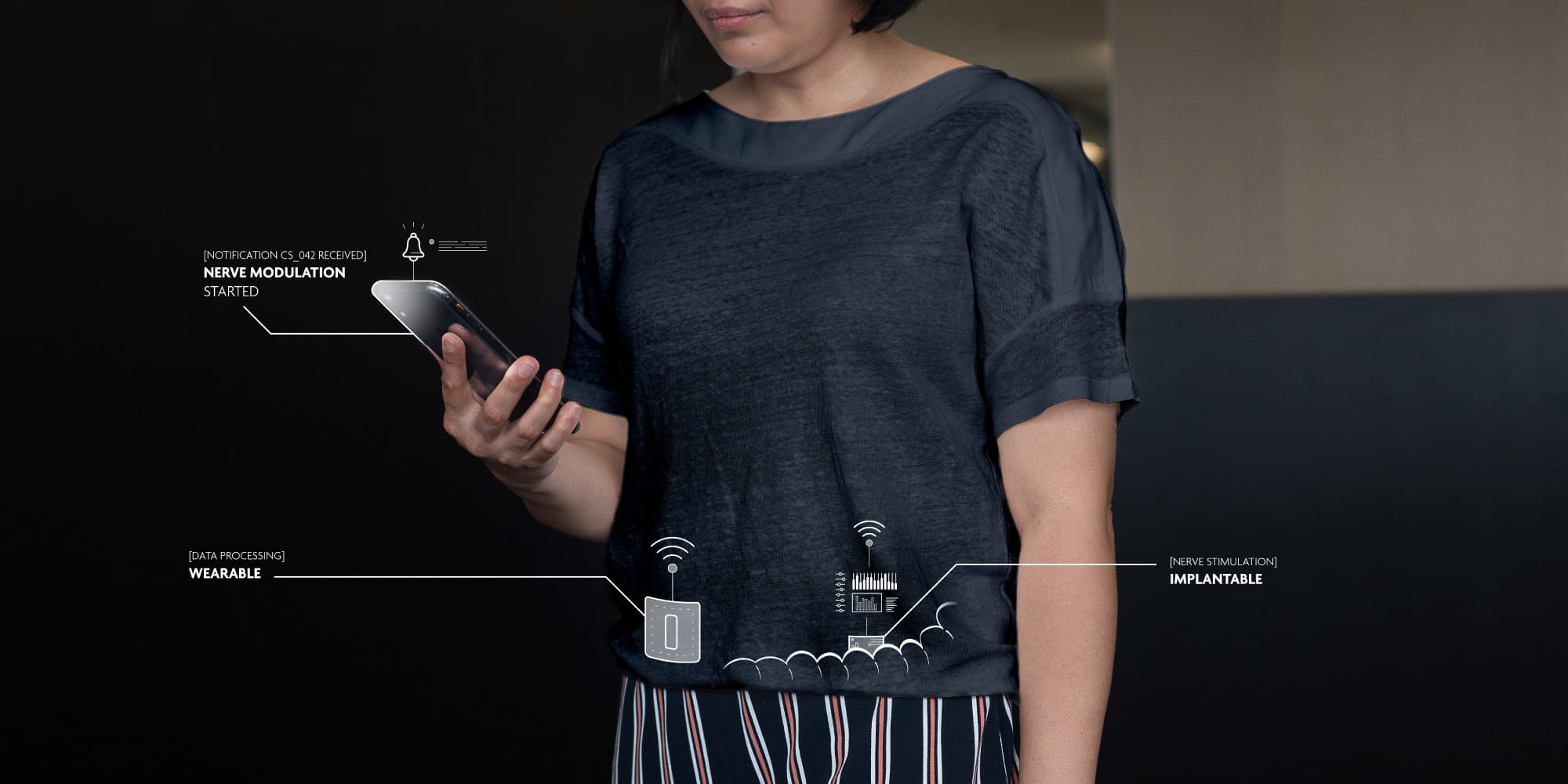
Technology for active implantable devices
Imec powers the future of bioelectronic medicine with ultra-small, adaptive implants that will unlock new possibilities for therapy and diagnosis.
Imec’s technologies enable partners to build groundbreaking devices, thanks to innovations in the field of ultra-low-power electronics, wireless communication, biocompatible materials, selective stimulation techniques, high-density electrodes etc.
As chronic diseases rise and drug therapies show limitations – such as off-target effects and toxicity – active implants are emerging as a precise and adaptive alternative. Known as bioelectronic medicine, these miniaturized devices treat disease by delivering targeted electrical stimulation to specific tissues and organs, acting directly on the nervous system.
Up till now, active implants have seen limited uptake due to their invasiveness, risks, and inability to adapt to changing patient needs. The next generation of implants promises to address these challenges – through miniaturization and precise targeting – and with that will significantly improve clinical outcomes.
Unlocking the true potential of bioelectronic medicine
The future of implants is being shaped by miniaturization, intelligence, and personalization. These systems are no longer deterministic endpoints. They interface directly with nerves, organs or biochemical processes in tissue, and operate as part of distributed health networks where implants, wearables, and external systems interact seamlessly. Altogether, acting as a closed-loop therapeutic system.
A miniaturized closed-loop therapeutic system reduces invasiveness, allowing for intervention in an outpatient setting without the need for replacement or reprogramming, and minimizing side effects – helping patients resume their normal daily routines.
Despite their promise, next-generation active implants still face key challenges:
- Miniaturization
- Multimodality
- Bidirectional functionality – sensing and stimulating, with low latency
- Power efficiency, ensuring long battery life
- Advanced biocompatibility
- Long-term reliability
- High-bandwidth wireless communication
- Data compression
To address a wide range of chronic diseases that could benefit from neuromodulation and -sensing, new methods and form factors must be developed.
Imec’s end-to-end expertise for next-generation custom implants
Imec acts as a strategic technology partner for custom, highly innovative implants through:
- ASIC development
- Low-power chip design
- Wireless communication
- Wireless power transfer
- Advanced materials for hermiticity and biocompatibility
- Biosensor technology
- On-device edge processing for real-time decision-making
With mature technology blocks as a foundation, imec’s multidisciplinary development team designs and builds fully customized active implants for clinical applications – supported by an advanced and flexible infrastructure that accelerates innovation from concept to realization.

An overview of imec’s capabilities for custom implants and ASIC development.
Imec’s broad expertise translates into real-world innovations such as the clinical research platform neuroIGNITOR, for selective peripheral nerve stimulation, and the high-resolution neural probes ‘Neuropixels’ for whole-brain research.
Imec ensures a short time to proof-of-concept
Imec empowers companies developing implantable systems by offering end-to-end support –from rapid concept validation to scalable manufacturing – leveraging deep expertise in miniaturization, system integration, sensor performance, and regulatory readiness, all within a vast ecosystem of suppliers and partners.
Typical reasons why companies choose imec as a partner include:
- Developing new products or adding innovative features
- Rapid proof-of-concept and prototype development
- Scalable volume manufacturing with unique form factors
- Enhanced long-term sensor performance
- Advanced communication and power solutions
- System integration and extreme miniaturization
- Expert coordination for pre-market approval

Neuroprobe showcasing imec’s capabilities in shank fabrication, electrode density on the shank, and ASIC development.
Read about our collaborations with startups and established companies:
- Imec explores disruptive ideas in health tech in collaboration with Johnson & Johnson Innovation
- Imec and NeuroGyn AG collaborate on advanced neurostimulation device for pelvic nerve disorders
- CAIRDAC embarked on an ASIC journey for a complete paradigm shift in Cardiac Rhythm Management (CRM)
- Capri-Medical, an Irish start-up is on a mission to prevent migraine with bioelectronics
- BioTelemetry turned to imec to jointly develop the next generation of its wearable device for arrhythmia detection
Click the contact button below to get in touch.












